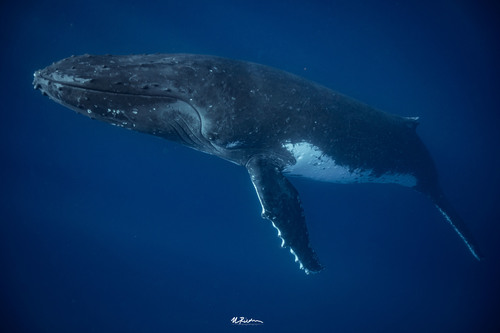
Humpback Whale
The humpback whale, Megaptera novaeangliae, captivates with its dynamic breaches and haunting songs. These migratory giants, known for their long pectoral fins, play a crucial role in ocean health through behaviors like bubble net feeding, showcasing the profound interconnections within marine ecosystems.
45-50 years
Lifespan
36000.0 - 99800.0 kg
Weight
Length: 14.6 - 19.0 m
Size
Grey, Black, White
Color
17 mph
Top Speed
Least Concern
Conservation Status
Increasing
Population Trend
Distribution Range of the Humpback Whale
Megaptera novaeangliae, commonly known as the humpback whale, is found in oceans and seas around the world. Their distribution is primarily in both hemispheres' temperate and tropical waters, including the North Atlantic and North Pacific oceans, as well as in regions surrounding the Indian Ocean and in the Southern Hemisphere waters near Antarctica.
Humpback Whale's Habitat
Environmental Conditions
Humpback whales typically inhabit coastal and oceanic environments. They are known to migrate between feeding grounds in colder, high-latitude waters during summer (where there is an abundance of krill and small fish) and warmer, low-latitude waters for breeding and calving in winter. Their habitat encompasses a range of climates, from polar to tropical, and they are often found in areas such as bays, estuaries, and continental shelf zones where food is abundant.
Ecological Niche
Humpback whales play a significant role in the marine ecosystem as both predators and prey. They have a varied diet primarily consisting of krill and small fish, and they employ unique feeding methods like bubble-net feeding, cooperative hunting, and lunging. These whales are also important for nutrient cycling in the ocean due to their consumption of marine biomass and the distribution of nutrients through their fecal matter, which supports the productivity of the oceanic primary producers (e.g., phytoplankton). Variations in habitat usage can occur among different humpback whale populations due to regional adaptations and environmental changes, such as differing migration patterns and breeding sites.
Copyright @ Nature Style Limited. All Rights Reserved.
 English
English